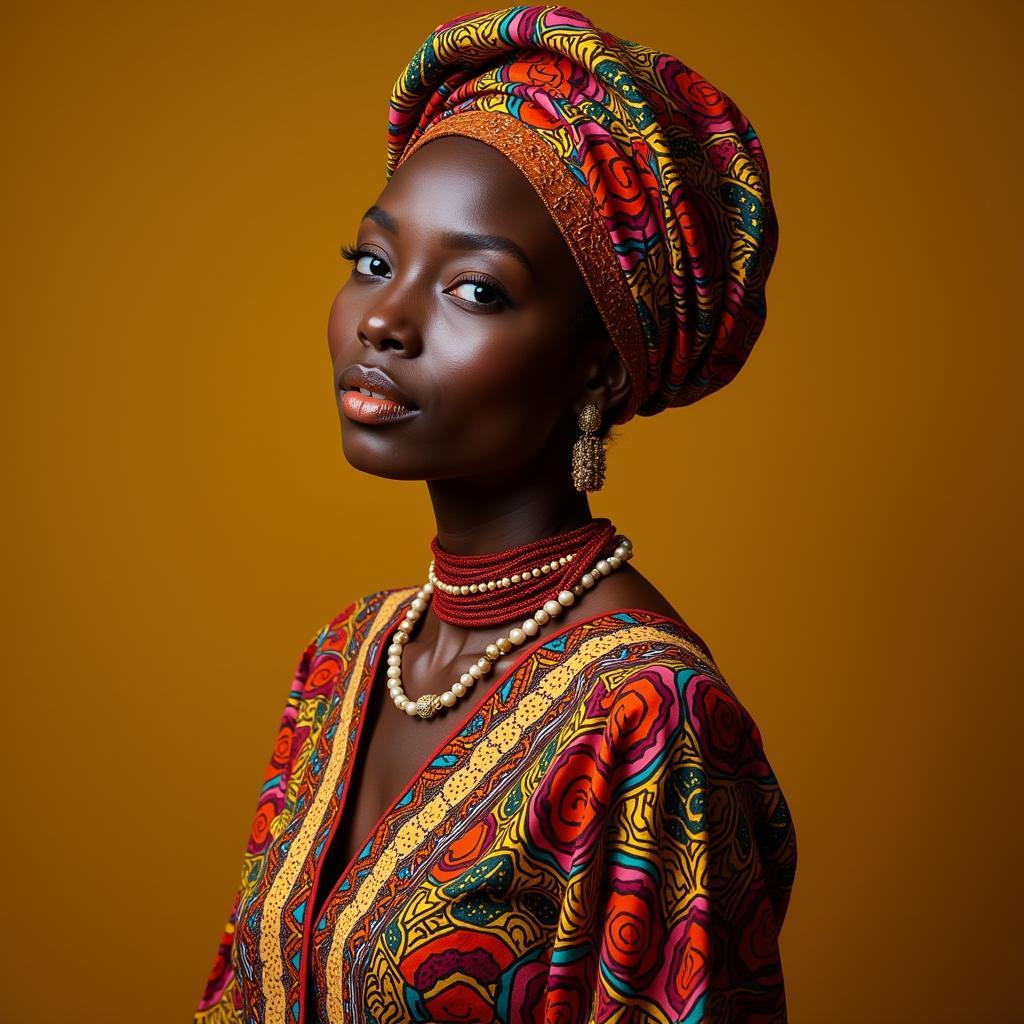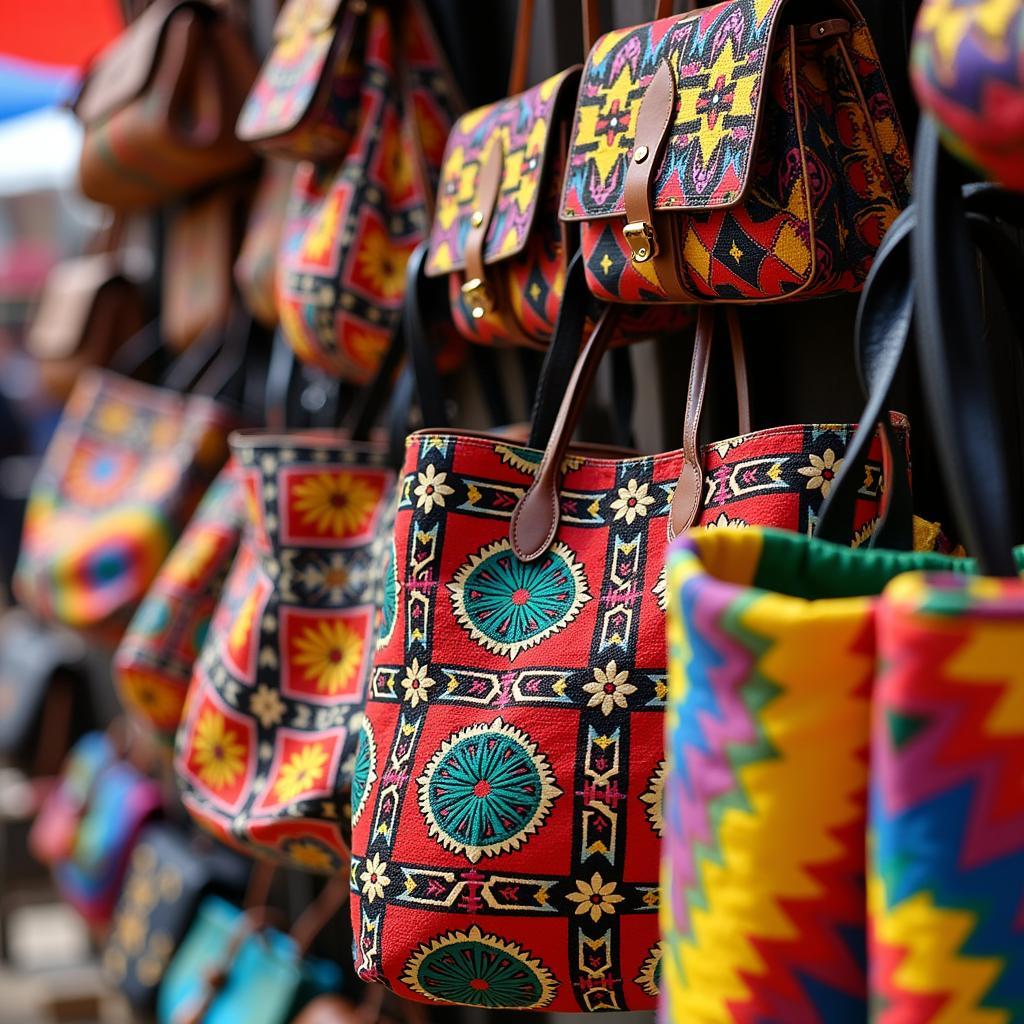Exploring the Vibrant World of African Attire Patterns
African Attire Patterns are a testament to the continent’s rich cultural heritage and artistic ingenuity. From the intricate kente cloth of Ghana to the bold mudcloth designs of Mali, each pattern tells a story, reflecting the history, beliefs, and traditions of its people. This article delves into the diverse world of African attire patterns, exploring their significance, symbolism, and enduring appeal. We’ll journey through the continent, discovering the unique patterns that adorn various garments, from everyday wear to ceremonial robes.
The allure of African attire patterns lies not only in their aesthetic beauty but also in the depth of meaning they carry. These patterns are often more than just decoration; they are a visual language, communicating social status, family lineage, or spiritual beliefs. Let’s unravel the threads of this fascinating textile tradition and uncover the stories woven into the fabric of African culture. For those interested in learning more about African culture, you can explore the diverse images showcasing African people. african people images
The Symbolism Behind African Attire Patterns
Many African attire patterns are imbued with symbolic meaning, passed down through generations. For instance, the Adinkra symbols of the Akan people of Ghana each represent a specific proverb, concept, or historical event. The Gye Nyame symbol, depicting a stylized spiral, represents the omnipresence of God, while the Sankofa symbol, a bird looking back over its shoulder, signifies the importance of learning from the past. Similarly, the Nsibidi ideograms of southeastern Nigeria and southwestern Cameroon served as a form of writing, conveying complex messages through intricate designs.
The colors used in African attire patterns also hold significant meaning. Gold often represents royalty and wealth, while red can symbolize power, courage, or spiritual energy. Blue can represent peace and harmony, while green often signifies growth, fertility, and the natural world. Understanding these symbolic associations adds another layer of appreciation for the artistry and cultural depth of African textiles.
Regional Variations in African Attire Patterns
From the north to the south, from the east to the west, African attire patterns exhibit remarkable diversity, reflecting the continent’s vast array of cultures and traditions. North African patterns often feature geometric motifs and intricate arabesque designs, influenced by Islamic art and Berber traditions. West African textiles, such as kente, bogolanfini (mudcloth), and aso oke, are known for their bold colors, intricate weaving techniques, and symbolic imagery. East African patterns often incorporate vibrant colors and geometric shapes, while Southern African designs showcase a blend of indigenous influences and colonial legacies.
For example, the intricate embroidery techniques employed across the continent further contribute to the diversity of African attire patterns. african embroidery techniques This regional variation highlights the unique artistic expressions of different communities and provides a glimpse into the rich tapestry of African culture.
African Attire Patterns in the Modern World
African attire patterns have transcended their traditional context and gained international recognition. Today, these vibrant designs are embraced by fashion designers, artists, and individuals around the world. From high-fashion runways to everyday streetwear, African attire patterns add a touch of cultural flair and artistic expression to contemporary fashion.
“African attire patterns are more than just fashion; they are a powerful expression of identity and heritage,” says Abena Serwaa, a renowned Ghanaian textile artist. “They connect us to our ancestors and tell the story of our rich cultural legacy.”
If you are searching for formal African attire, you might be interested in finding resources near you. [african formal dresses near me](https://omenkamag.com/african-formal-dresses-near me/) These patterns are not simply trends; they represent a vibrant and enduring cultural heritage that continues to inspire and captivate audiences worldwide.
What are some common African attire patterns?
Some common African attire patterns include kente, Ankara, mudcloth, and aso oke. Each pattern originates from different regions and carries unique cultural significance.
How are African attire patterns made?
African attire patterns are created using various techniques, including weaving, dyeing, printing, and embroidery. Many of these techniques have been passed down through generations, preserving the rich textile traditions of the continent.
Conclusion
African attire patterns are a vibrant expression of the continent’s rich cultural heritage. From the symbolic meanings embedded within the designs to the diverse regional variations, exploring these patterns offers a fascinating journey into the heart of African art and tradition. As these patterns continue to inspire and influence the world of fashion and design, they serve as a powerful reminder of the enduring beauty and cultural significance of African attire patterns.
“The future of African fashion lies in embracing our heritage while innovating for the modern world,” adds Kofi Annan, a prominent fashion designer based in Accra, Ghana. “By incorporating traditional patterns into contemporary designs, we can ensure that these cultural treasures continue to thrive for generations to come.”
FAQ
- What is the significance of Kente cloth?
- What are some common motifs in North African patterns?
- How can I incorporate African attire patterns into my wardrobe?
- Where can I find authentic African textiles?
- What are some sustainable practices in African textile production?
- How are African attire patterns used in ceremonies and rituals?
- What is the history of indigo dyeing in Africa?
More to Explore
Explore more about African families and their traditions. You can also find images of African girls in different attire. african american family silhouette african girls in panties
Contact Us
For any inquiries or assistance regarding African attire and culture, feel free to contact us.
Phone: +255768904061
Email: kaka.mag@gmail.com
Address: Mbarali DC Mawindi, Kangaga, Tanzania
Our customer service team is available 24/7 to assist you.


